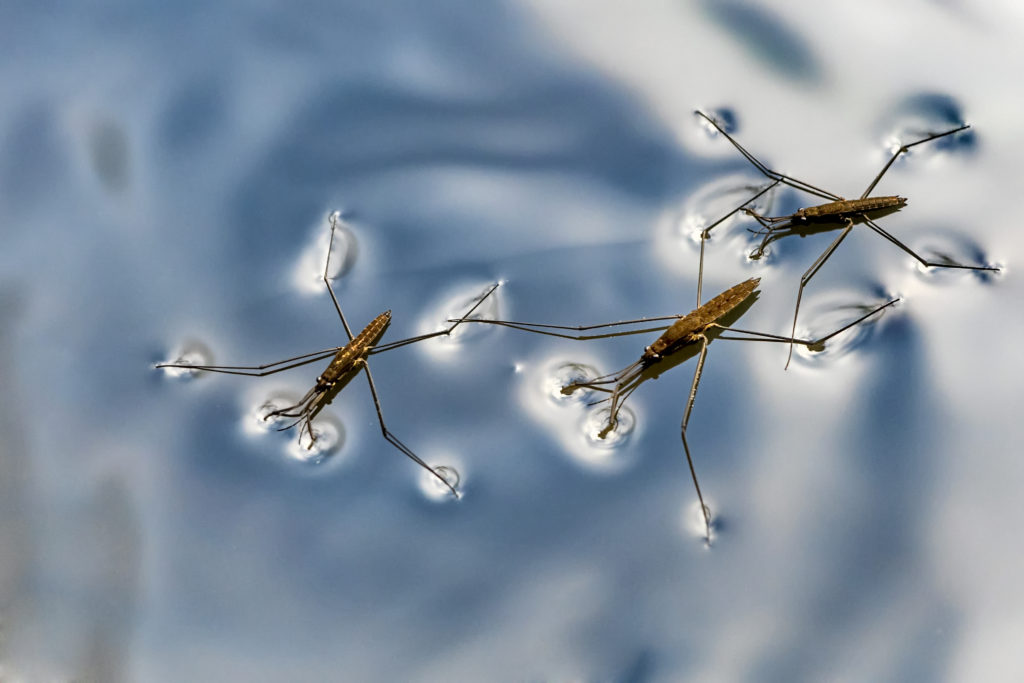Requirement #3: Study Water¶
\(\boxed{\mathbb{REQ}\Large \rightsquigarrow}\) Choose two requirements from A or B or C or D and complete ALL the requirements for the two you selected.
Examine models of the structures of liquid water and ice. (You can use either a physical model or a computer model.) Note the similarities and differences between them. Discuss with your counselor how the structures of water and ice affect their properties and their ability to dissolve compounds and carry impurities.
Hint
Helpful Links (Be sure you have your parent’s or guardian’s permission before using the internet.)
The Interactive Library — Explain It With Molecules.
University of Alcala - Intermolecular hydrogen bonds in liquid water and in ice.
Prepare two demonstrations or activities involving surface tension or hydrophobicity, and present them to a Cub Scout den or other youth group. Explain the science involved, and discuss your presentation with your counselor.
Hint
Information and Tools to Examine Properties of Water
The Interactive Library—Explain It With Molecules.
University of Alcalla—Intermolecular hydrogen bonds in liquid water and in ice
Hint
Some Sources of Materials:
Hydrophobic materials—Naturesorb (dried sphagnum peat moss);
Scotchgard (for coating sand grains)
Tulle fabric—From fabric store (use instead of screen)
Dialysis tubing—Carolina Biological Supply
Hint
Some Experiments
Massachusetts Institute of Technology— Surface Tension.
WonderHowTo—How to do a science trick demonstrating surface tension with pepper, soap, and water.
SteveSpangler.com—Magic Sand – Sand That Is Always Dry. (hydrophobic material)
SteveSpangler.com—Mysterious Water Suspension. (water cohesion forces)
Michigan Tech MindTrekkers – Surface Tension Trap.
Use the internet (with your parent’s or guardian’s permission) to determine the annual water use for your state in gallons and acre-feet.
What are the main sources (provide percentages)?
Who are the main users (provide percentages)?
What are the trends in total and per capita water use over time? (4) Discuss what you learned with your counselor.
Hint
Helpful Link: * USGS Water Use in the United States https://water.usgs.gov/watuse/
Household water use. Create a list all of the ways that water is used around your home in a 24-hour period, including the bathroom, kitchen, and any appliances. Don’t forget outdoor water uses such as pools, hot tubs, sprinkler systems, landscape and gardens, pets and/or livestock, and cleaning efforts such as washing cars, boats, pets, etc.
Estimate how much water is used for each function over a specific time period. Add your estimates to come up with an estimate of total water usage by your family for one month or one year.
Compare your estimate with the actual total found on your home water bill, and account for any large differences. (Hint: ask your parent or guardian to help you locate that information on the monthly water bill or well meter.)
Note
If you live in a multi-family housing unit and do not have an individual water bill, you may be able to obtain the information from your unit’s management. If not, measure your water usage for at least two tasks (for example, by leaving the drain closed when you take a shower, then measuring the amount of water that collected in the tub during your shower), and use that data to revise your estimates.
How does your local usage compare to the average use per capita in your state? The United States Geological Survey (usgs.org) is a good source for data on average water usage.
Identify several ways to reduce your water consumption, and practice them for one month. Estimate how much clean water you have saved.
Discuss your work and what you learned with your counselor.

Surface tension allows those insects to walk on water! Image obtained from science-sparks.com (click on image for reference). Check that website for fun and easy experiments to learn more about surface tension.¶
Attention
Once you have completed this requirement, make sure you document it in your worksheet!